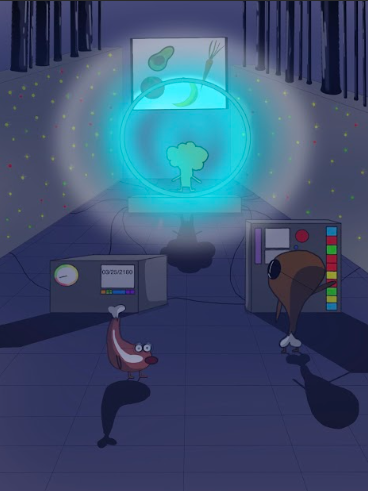Antarctica: A Tale of Ice and Fire
In the South Pole, scientists have made more than one discovery that will affect the world at large
October 11, 2017
|
|
|
|
In August, the largest volcanic region on the planet was found more than a mile beneath the Antarctic ice shelf. Scientists belonging to Edinburgh University are credited with the massive discovery, which has revealed 91 previously unknown volcanoes.
According to the team’s geographical survey, the volcanoes vary in height from 300 to 13,000 ft., the tallest on par with the Eiger mountain in the Swiss Alps; every last one is cemented over in ice, some two-and-a-half miles below the surface.
The region’s active peaks, when added to 47 others discovered in the past century by various other expeditions, have been grouped into the west Antarctic rift system, an area spanning roughly 2,100 miles in diameter from the Ross ice shelf to the Antarctic peninsula, the continent’s northernmost land mass.
As a result, researchers claim the region could easily replace Africa’s volcanic ridge as the location of the world’s densest concentration of volcanoes, home to famous mounts Kilimanjaro, Nyiragongo, and Longonot.
The discovery is also particularly significant, as new volcanic sites could have crucial implications for the rest of planet.
The sheer scale of possible activity in the Antarctic perturbs the scientific community. Among possible concerns, the foremost is the feasibility of an eruption, which could quickly accelerate the speed of melting ice and quickly trigger a rise in sea levels.
The most volcanic phenomena present in today’s world are located in regions such as Alaska and Iceland, which, in terms of thousands of years, have lost their glaciers following the conclusion of the most recent ice age. It is commonly believed that an increase in activity from a volcanic center occurs soon after a large release pressure results from ice steadily receding overtime, a product of climate change.
This may also occur in Antarctica, where effects of global warming have shown for years. As it stands, further destabilization would prove worse for the continent’s ice shelves, as dormant volcanoes located below the ice would also begin erupting.
In a future where the South Pole’s ice were to dissolve completely, the likelihood of annexation by virtue of conquest or access to untapped natural resources from nations relative to the Southern Hemisphere and beyond would be considerable.
A similar situation already encapsulates the Arctic Sea in regards to the use of the Northwest Passage as a viable trade route, where Russian and American military presence has only grown over the past decade. In the words of Global History and Geography Teacher David Rabinowitz, “Wherever there is trade, there is conflict, yes. It is inevitable. Russia’s claim to the Arctic is shaky, since much of the land they call their own is floating ice. Whether a resolution comes by diplomacy or weapons, we don’t know.”
However, as it is understood, the Edinburgh team’s findings does not only bare negative repercussions.
Since the discovery, Antarctic volcano Mount Erebus, infamous for the crash of Air New Zealand Flight 901 after a coordinate error, is theorized to support life in its extensive cave system. Speculation began not long after a report originated that temperatures regularly rise up to 77 degrees Fahrenheit near Erebus’ volcanic center. The same is true for other such volcanoes with sub glacial caves, Mount Rainier in Washington State and Grimsvotin, Iceland among them.
This theory, in association with a paper entitled “Evidence of plant and animal communities at exposed and subglacial (cave) geothermal sites in Antarctica,” has sprouted from startling DNA evidence collected as soil samples from exposed areas of Erebus’ base. When compared with other gene segments, the samples taken from Mount Erebus were similar to that of known plants and invertebrate animals.
Surprisingly, while most of the genetic material exists in other biological niches, a number did not correspond with any other preexisting plant or animal groups—perhaps housing life entirely unknown. Their results suggest unidentified species of earthworms, arthropods, mosses and green algae, conceivably built to withstand extreme high or low temperatures resulting from fluctuations in heat from Erebus’ magma core.
It is not unfair to call Antarctica’s future a mixed bag. However, its past could not be more different. Since December 1, 1959, the date of the Antarctic Treaty’s signing, the planet’s southernmost continent exists as proof of humanity’s ability for peaceful negotiation and conservation. Save only territory preserved for the purpose of scientific exploration, no sovereign nation has ever placed the Antarctic within its borders, devoid of civilization. Though the long-term effects of these discoveries remain unknown, whatever conclusion comes will hopefully be beneficial, not only to us, but also the whatever life inhabits the Antarctic landscape.







































